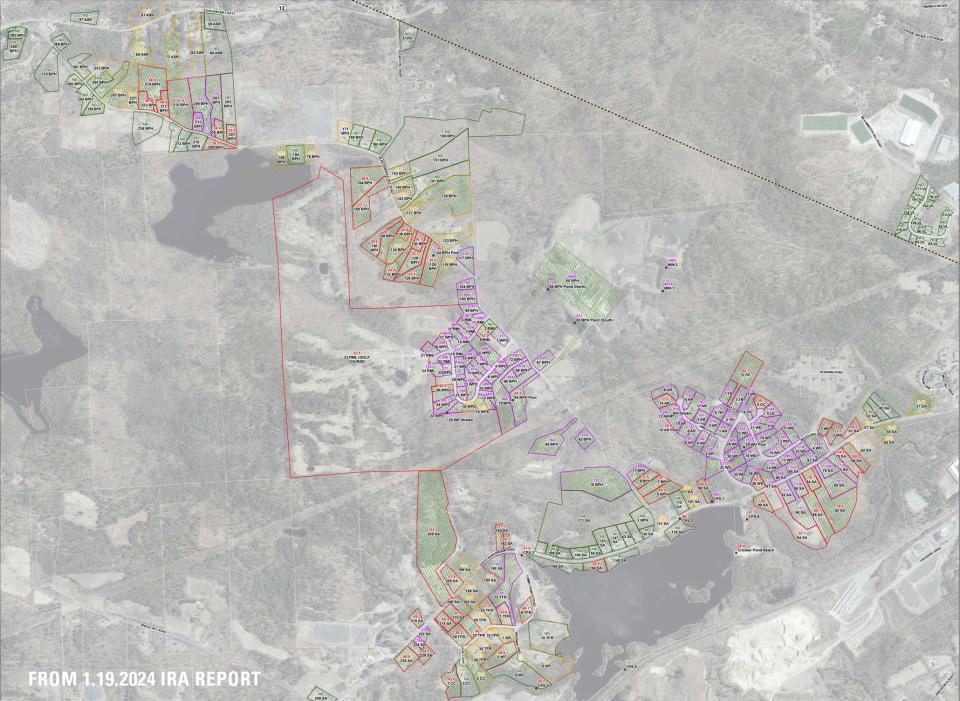What you need to know about Westminster's PFAS contamination and its remediation
It has been more than two years since the PFAS6 forever chemicals were discovered in several private wells in Westminster. The chemicals leaked into neighboring private wells from compost material at the Massachusetts Natural Fertilizer facility at 65 Bean Porridge Hill Road.
PFAS6 is the term for six chemical compounds found in many products that the average American consumer uses daily — from single-use plastics to raincoats and even microwavable popcorn. The chemicals are used to create water-resistant, stain-resistant, and non-stick items. The chemical compounds are called the "forever chemicals" because they do not decompose in the natural environment. Some studies have linked long-term exposure to these chemicals to cancer.
Where does the investigation stand?
Since the initial discovery, 273 private wells have been sampled for PFAS6.
PFAS6 concentration above 90 parts per trillion (PPT) was detected in 129 of those wells. Between 20 and 90 PPT of PFAS6 were detected in 52 wells. Below 20 PPT of PFAS6 concentration was detected in 38 wells. In 54 wells, there are undetectable levels of PFAS6 concentration.
As of Jan. 17, 2024, 180 POET (Point of Entry Treatment) systems have been installed.
The last time a contaminated well was discovered was Oct. 24, 2023. The property is on Ashburnham Road, and the test findings reported 31 parts per trillion of PFAS6.

How is the study area determined?
Nearly 300 wells make up the investigated study area. The map shows where the study area is: All properties outlined in green have been sampled, and there is an undetectable level of PFAS6. All properties in yellow were sampled, and reported levels below 20 PPT of PFAS6 concentrate were detected. All properties in red were sampled, and more than 20 PPT but below 100 PPT of PFAS6 concentrate were detected. All properties outlined in pink were sampled, and greater than 100 PPT and below 4,572 PPT of PFAS6 concentrate were detected.
Every time a well test comes back with a detected amount of PFAS6, regardless of the level, a new 500-foot circle is drawn, and all wells in the new circle need to be tested.
Why was there testing in Fitchburg?
Homes near the ongoing investigation of the study area in Fitchburg have been sampled, but PFAS6 was not detected.
Overall, 22 homes at Victoria Lane, a West Fitchburg neighborhood, were sampled after a resident of that area did a routine well test that detected PFAS6 at 43 parts per trillion. The homeowner allowed a point-of-entry treatment system to be installed, but PFAS6 has not been detected during sampling since then.
The 22 homes on Victoria Lane have been sampled several times between summer 2022 and fall 2023, and no PFAS6 has been detected.
MassDEP has not mandated nor recommended a sampling schedule for Victoria Lane. In August, Lessard Environmental, which is conducting the site cleanup, proposed a sampling schedule that would continue until it has been determined that Victoria Lane is not part of the contaminated area.

What is being done to ensure affected residents have safe drinking water?
Bottled water continues to be delivered to residents in the affected area who have not declined delivery.
Three properties on South Ashburnham Road have been connected to the Westminster municipal waterline.
There are 12 homes adjacent to the waterline in South Ashburnham Road and Woodland Drive remaining to be connected this spring. MassDEP has confirmed they will be connected at the expense of the PRPs (Potentially Responsible Parties, identified in this case as Mass. Natural Fertilizer Company Inc., and others).
MassDEP, the PRPs, and the Town of Westminster are in discussions to extend the municipal water line to additional homes in the affected area.
Sampling wells and test borings are being drilled at the compost site as part of the study area investigation. The sampling wells and test borings will be used to monitor the PFAS6 concentration in the soil and groundwater.
This article originally appeared on Gardner News: Westminster PFAS contamination - here's what's happening with the water

